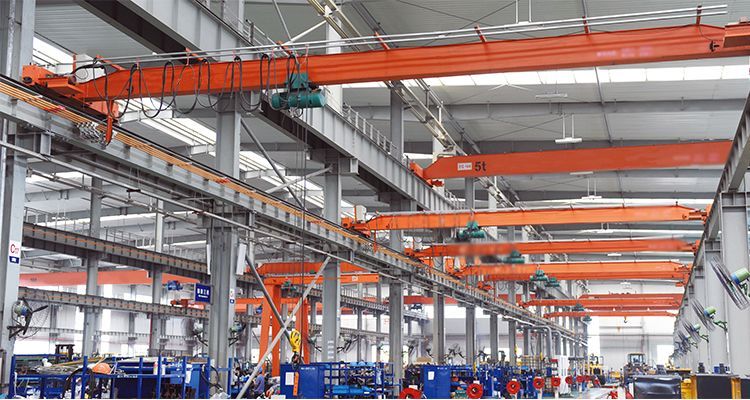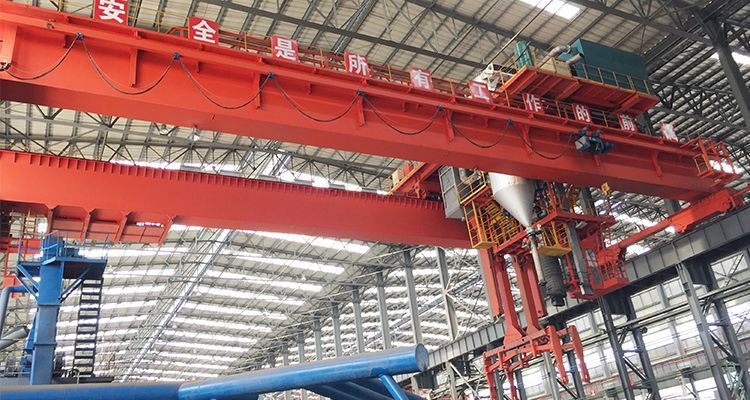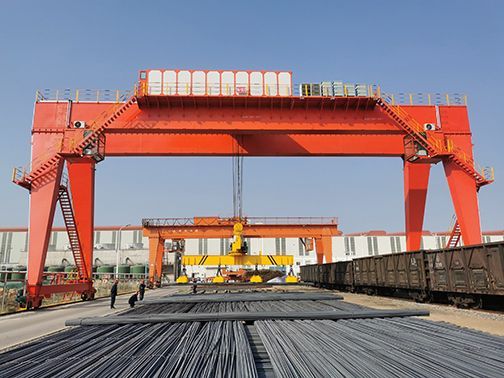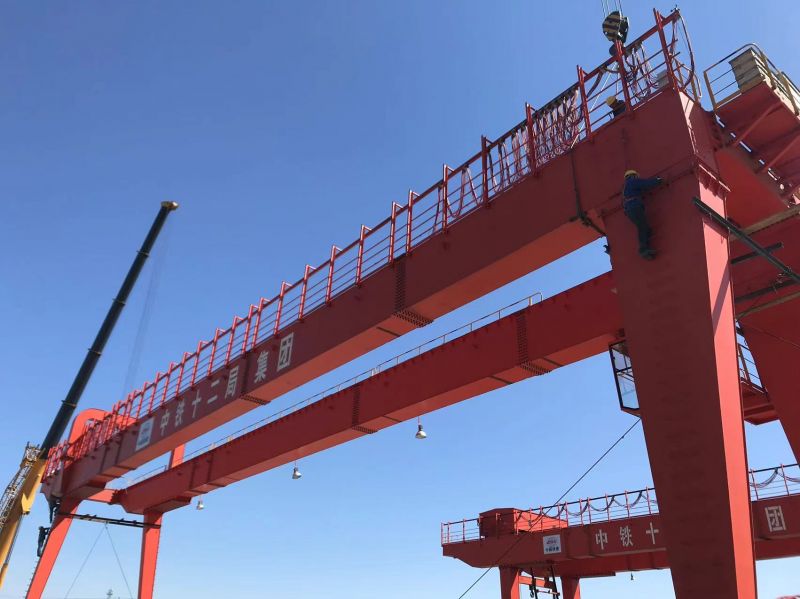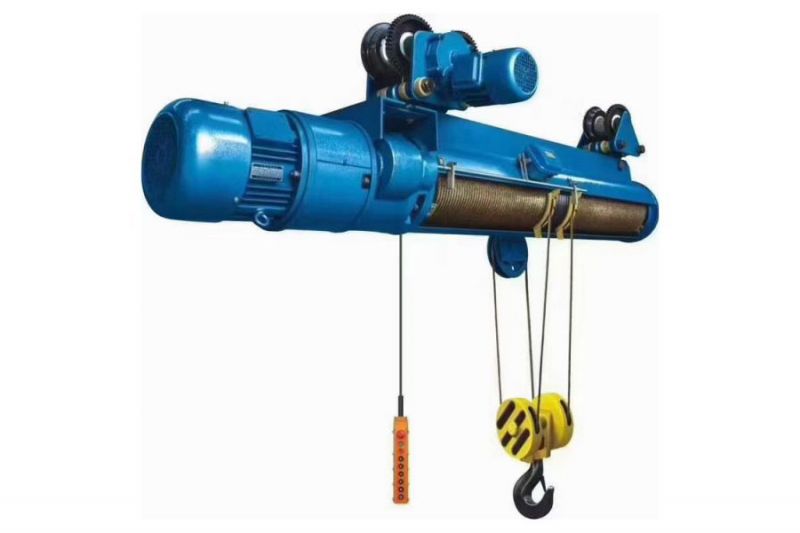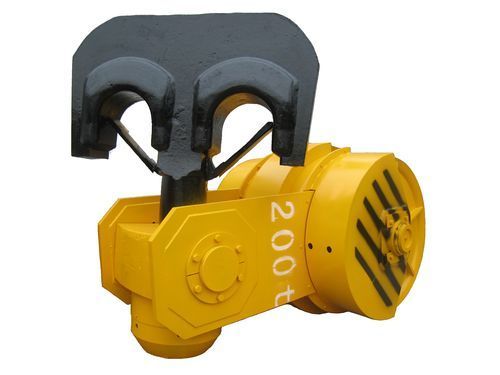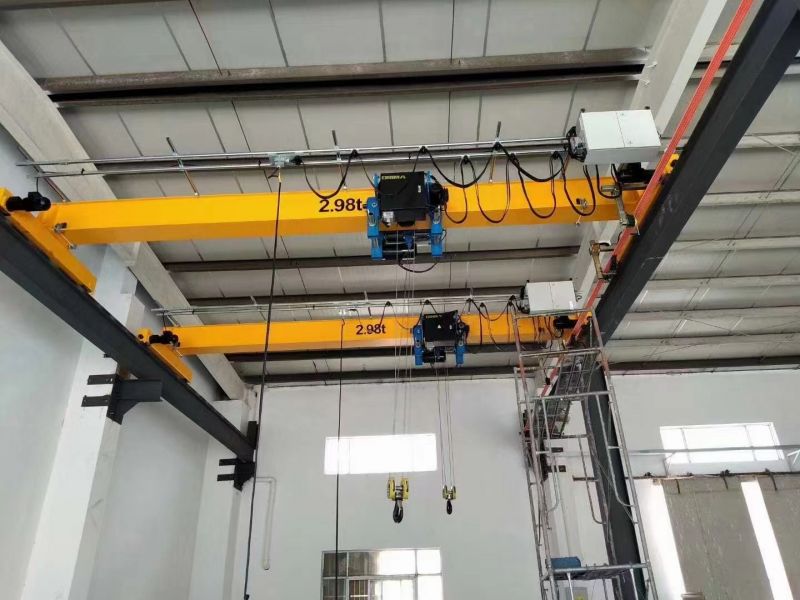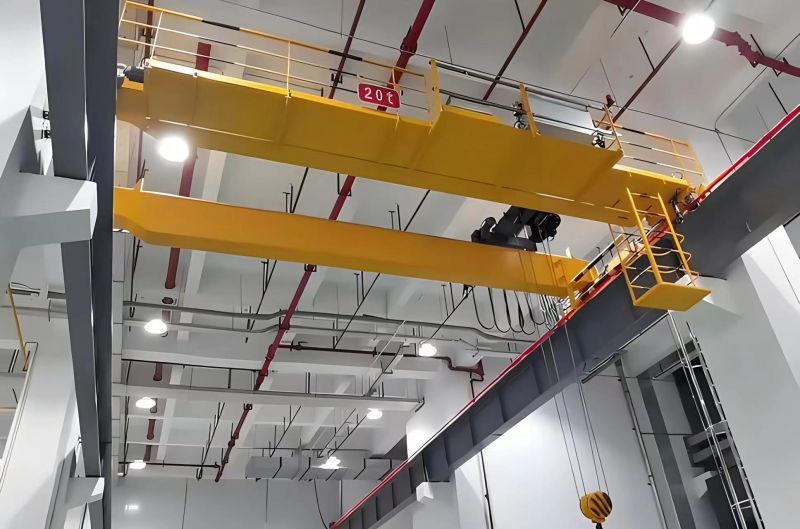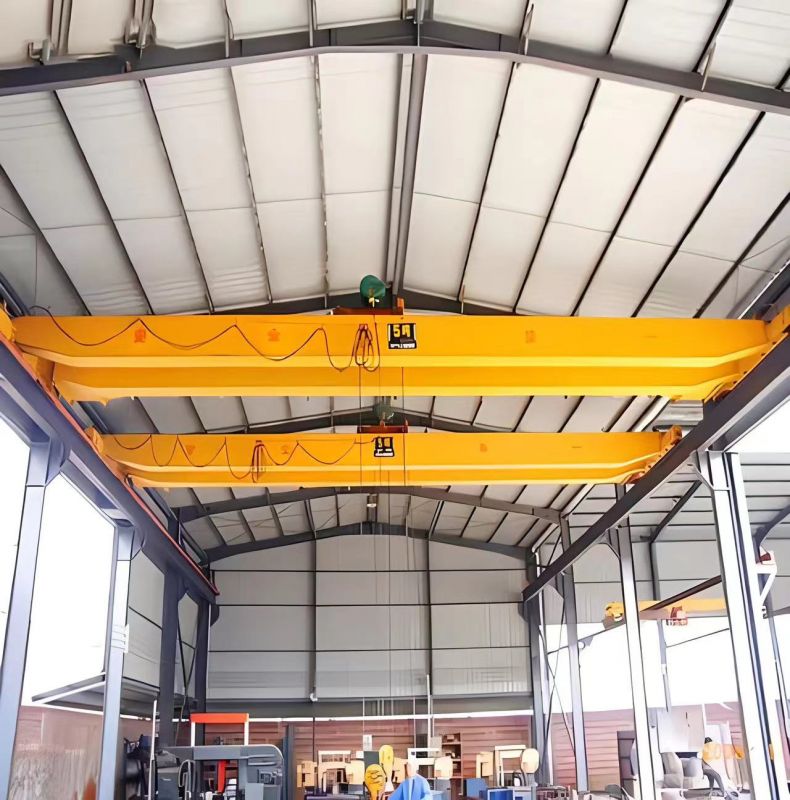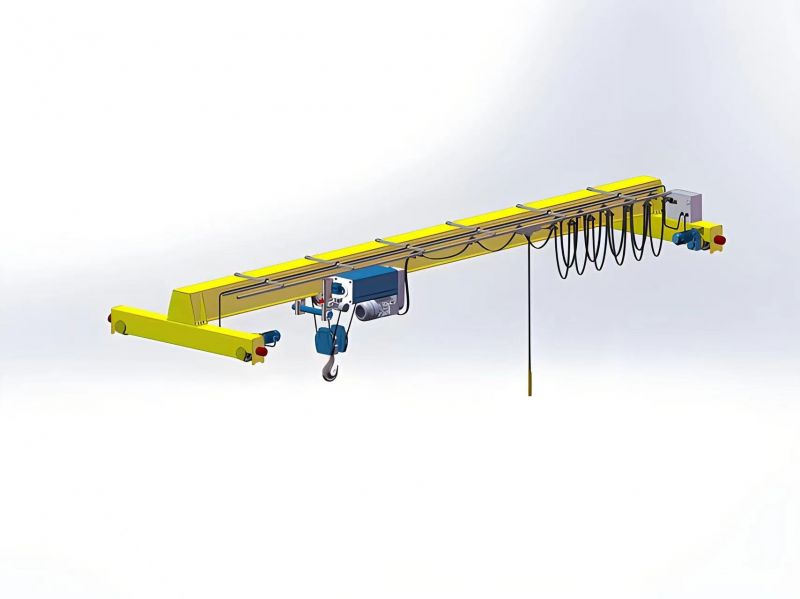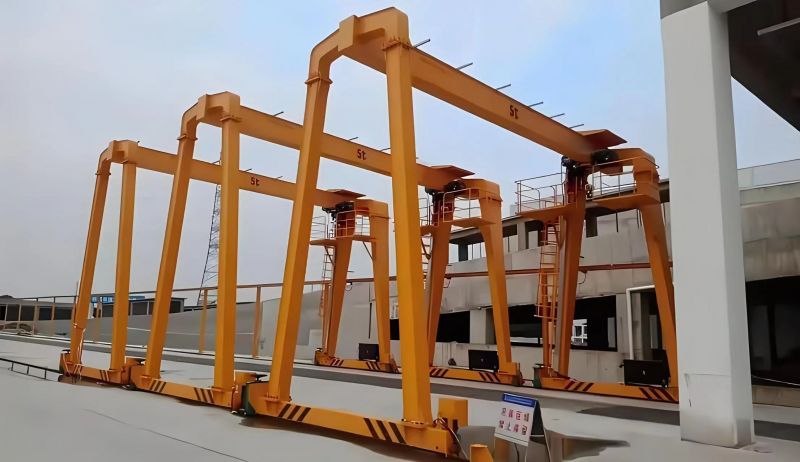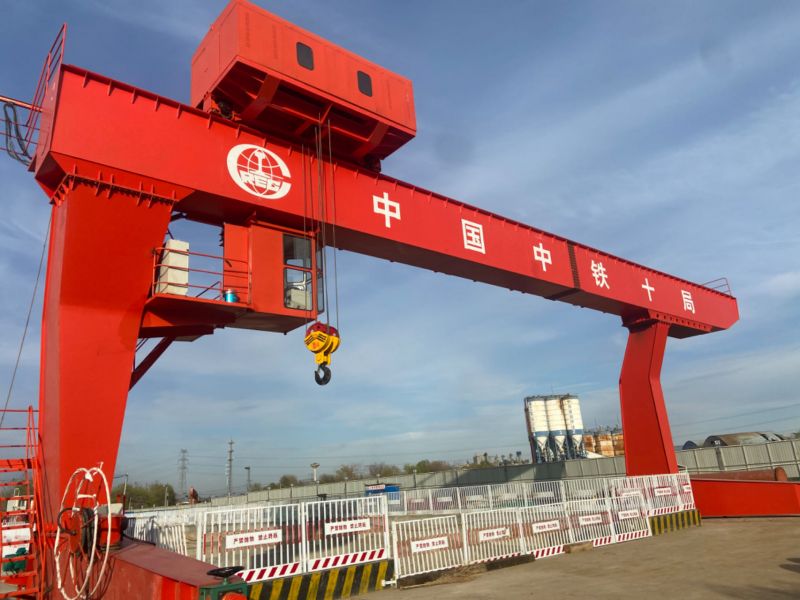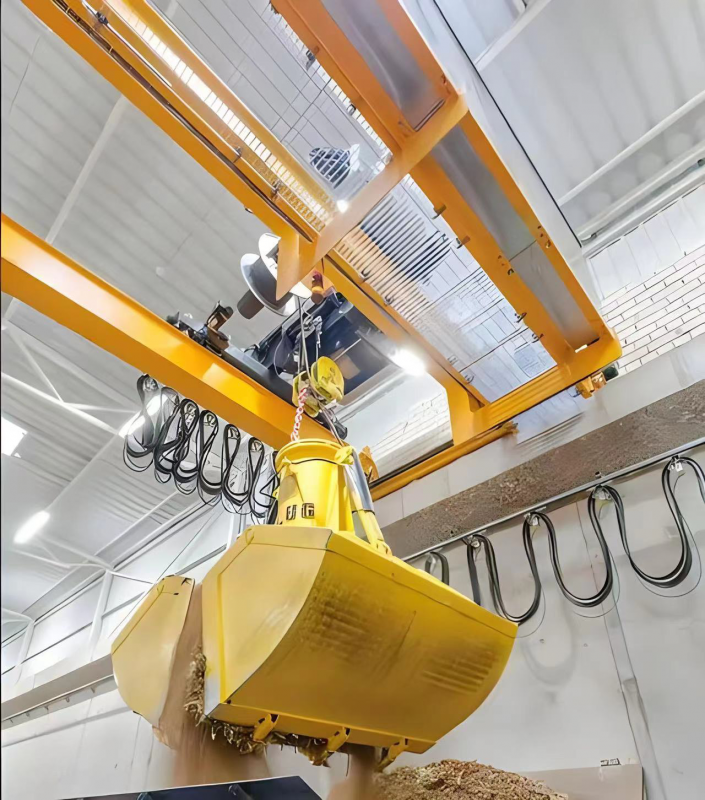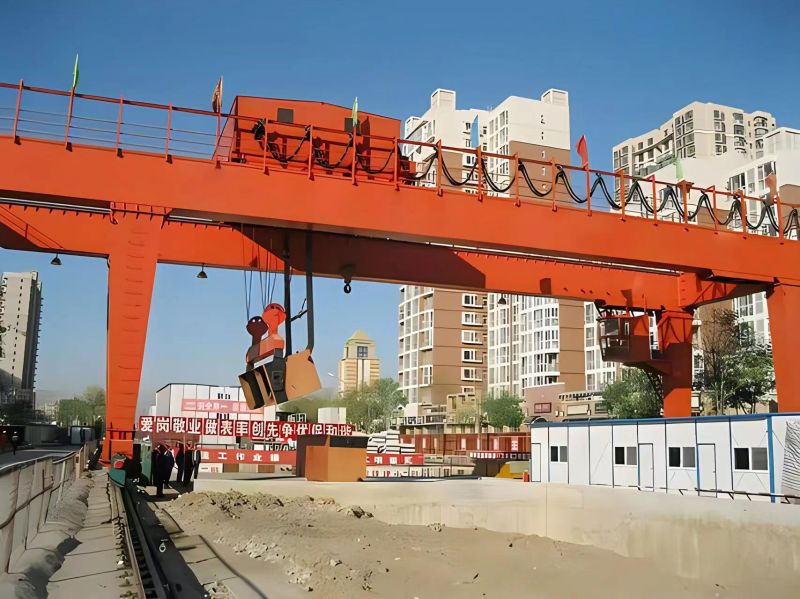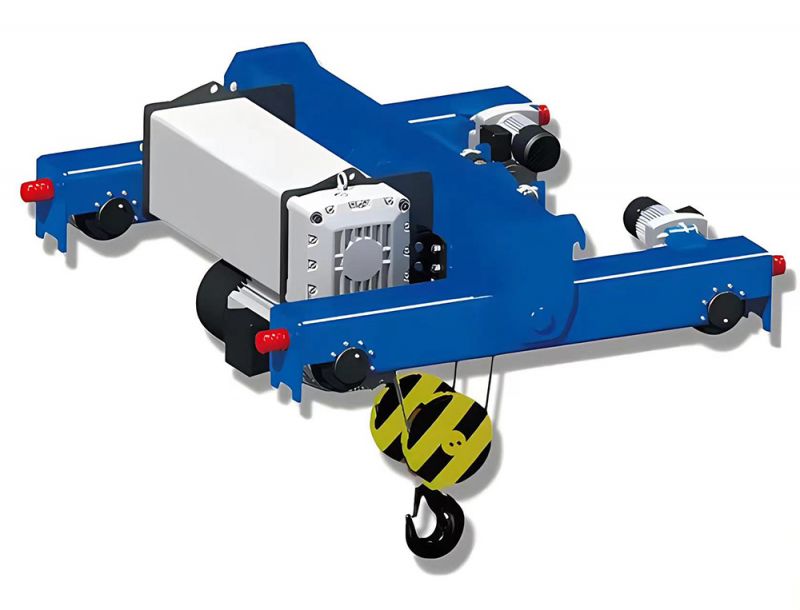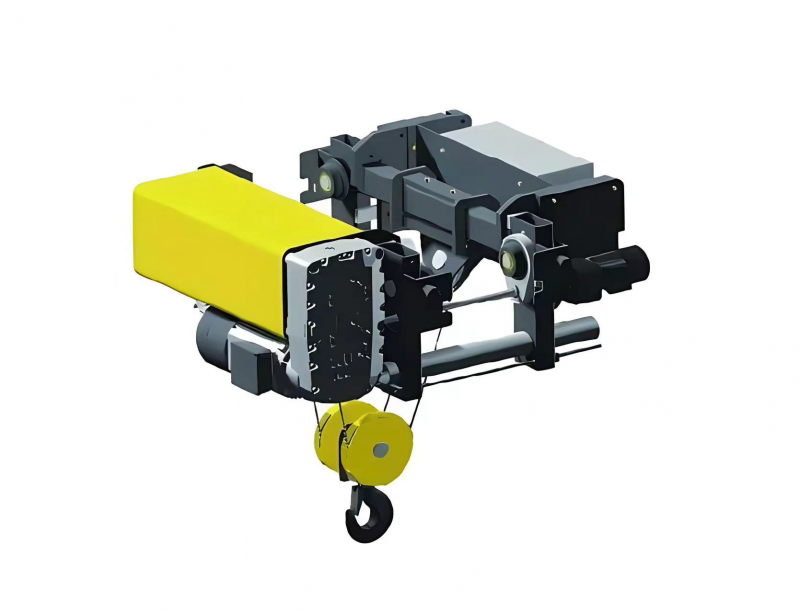Double beam bridge crane
Source manufacturer
technological innovation
High cost performance ratio
Classification of Bridge CranesThere are many types of bridge cranes, which can be classified according to different methods.1) According to different lifting devices, they can be divided into hook type cranes, grab bucket cranes, and electromagnetic suction cup cranes.2) According to different purposes, it can be divided into two categories: general bridge cranes and specialized bridge cranes. There are various forms of specialized bridge cranes, including forged bridge cranes, cast bridge cranes, metallurgical bridge cranes, power station bridge cranes, explosion-proof bridge cranes, insulated bridge cranes, hanging beam bridge cranes, dual-purpose (three purpose) bridge cranes, and high lifting height bridge cranes.2. The purpose of bridge craneBridge cranes are widely used in various industrial enterprises, ports, warehouses, material yards, power stations, and other places.Different types of bridge cranes are suitable for lifting different heavy objects, and different lifting devices are used according to different requirements. Hook crane lifts various heavy components; The grab crane lifts various bulk items such as coal, coke, sand, salt, etc; Electromagnetic cranes are used to lift magnetic materials such as steel sections, steel plates, scrap steel, etc.A dual-purpose or triple purpose crane is designed to improve production efficiency by installing a convertible hook, grab bucket, or electromagnetic disc on a small car. It can lift individual pieces, loose particles, or magnetic metal materials, but only one of the lifting devices can be used each time a heavy object is lifted.Explosion proof cranes are used to lift heavy objects in workshops, warehouses, and other places with flammable and explosive media. The electrical equipment and related devices on the crane have explosion-proof characteristics to prevent sparks from causing explosions. Insulated cranes are used to lift various components in the electrolysis workshop. The relevant parts of the crane are equipped with reliable insulation devices to ensure safe operation.A double trolley crane is equipped with two trolleys on the same main beam, which can work together or be used separately.The hanging beam crane lifts and stacks various long materials, such as wood, steel pipes, rods, profiles, steel plates, etc., through the balance beam hooks on two hooks or the electromagnetic disk on the balance beam.




